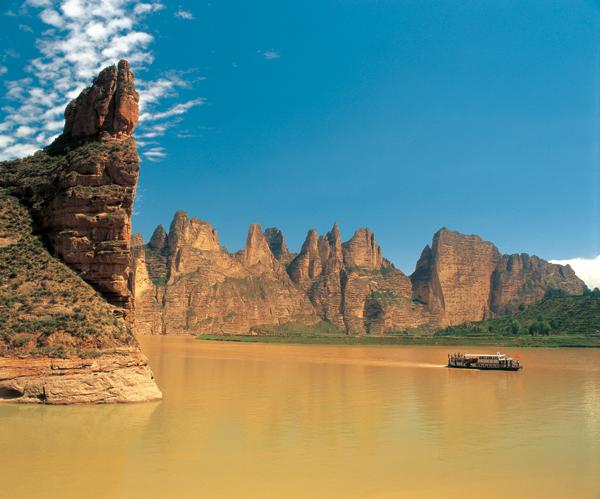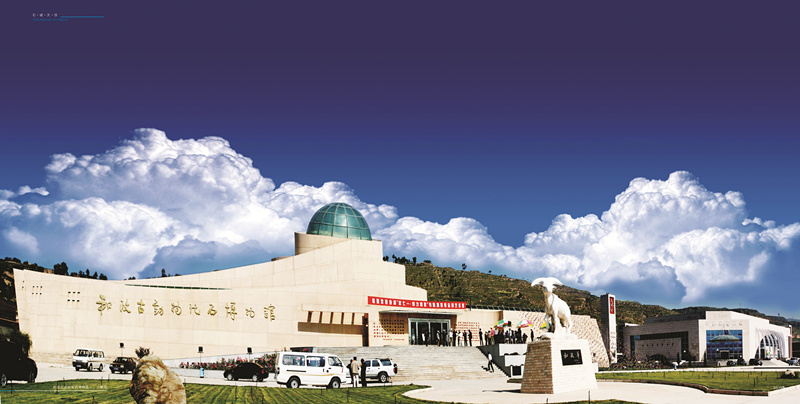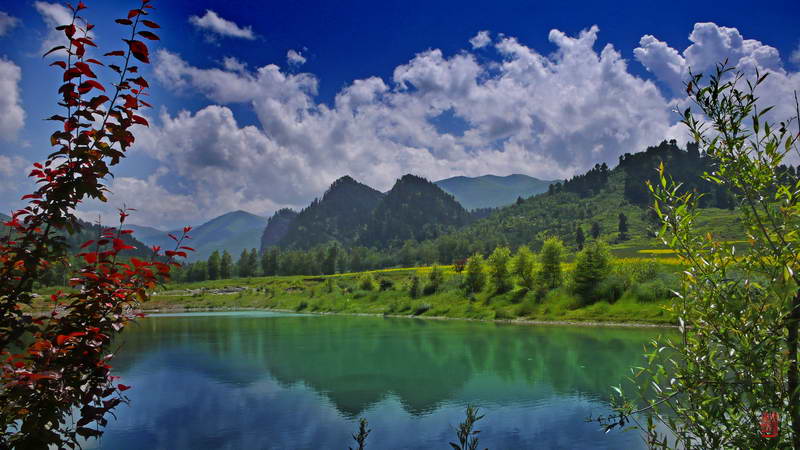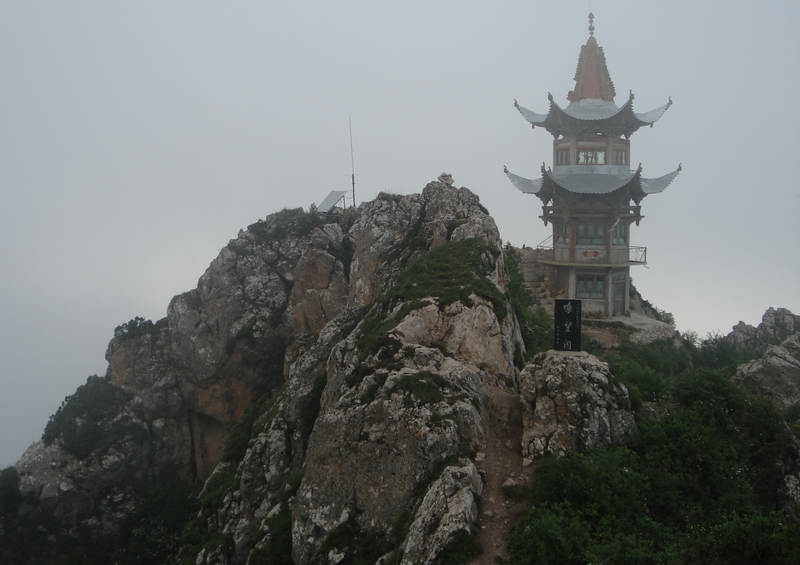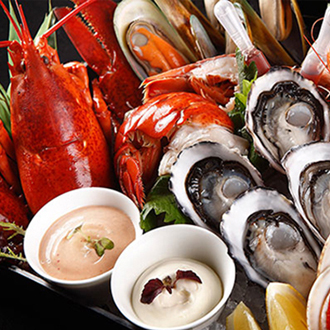Linxia Hui Autonomous Prefecture
Linxia is located in the southwestern part of Gansu Province, which is a strategic place in the south route of ancient Silk Road. It once named Baohan, Hezhou and was known as “Tea-horse Trade Market" “Dry Dock" in the west and “A Vital Town of Hehuang". It also crowned the name of “China’s Small Mekka”, “Home to Hua’er Folk Art", “Home to Colored-pottery ” and “Peony Town". Linxia Hui Autonomous Prefecture (Linxia in brief), one of China's two major Hui Autonomous Prefectures, was established in November 1956. With an average altitude of 1917 meters, it covers 88.6 square kilometers. It is 117 km away from the provincial capital Lanzhou. Linxia is located in the converging zone of the Tibetan Plateau and the Loess Plateau. The topographical condition features immense ravines, with less level land, declining from southwest to northeast and forming a tilting basin. With an average altitude of 2000 meters. Here is the important water supply area in the upper Yellow River, and all the rivers in Linxia are annexes to the Yellow River. The Yellow River flowing through Linxia extends 103 kilometers. The first-class branch includes Taohe River, Daxia River, Huangshui River, etc. There are more than 30 branches above the 3rd-class river. The majortiy part of Linxia belongs to the semi-arid temperate climate zone. It is cold and damp in southwest mountainous regions, while it is arid in northeast. The plains in valley are mild, neither extremely cold in winter, nor very hot in summer, with four distinctive seasons. It is home to 18 ethnic groups, Han, Hui, Dongxiang, Bao’an, Sala and others, the Hui ethnic minority population accounting for more than half of the population in Linxia. It is one of the most densely populated Hui habitations with rich Muslim customs culture. The mosques here are the artistic blending of Chinese and Arabic styles. The halal culinary culture has a long history and is in a class by itself. Linxia enjoys its own genres of Hui’s Brick Carving, Wood Cutting Han ethnic group, and Tibetan Paintings and Gourd Carving. These are genuine non-material cultural heritages. Purple-strip Peony and “Hua’er" art are typical local specialties. Linxia City is a transit point and the destination for Hui and Tibetan travels. The city has a rich ethnic customs and local characteristics. People’s Red Garden highlights the classical architecture of eastern China and local architecture. Dongjiao Park South Longshan Forest Park, Longevity Hill Park, Baohan Park are in different parts of the city. The well-known tourist attractions here are: Eastern Villa, Butterfly House, South Gate Mosque, Dagongbei, Wanshou Temple. There are Bingling Grotto Temple, Liujia Gorge Reservoir and Songmingyan Forest Park in the vicinity. Three Gorges of the Yellow River Scenic Spot in Yongjing County (AAAA)
Three Gorges of the Yellow River are named after Bingling Gorge, Liujia Gorge and Yanguo Gorge, located in the upper reach of the Yellow River in Yongjing County, Gansu Province. Along the 107-kilometer main stream of the Yellow River flowing through the county, there is a miracle of beautiful landscape of the three gorges created by nature. Surging from Jishi Gorge, the Yellow River goes into Bingling Gorge where the most attractive scenic spot -- Bingling Temple Grotto is situated. The Grotto is composed of Upper Temple and Lower Temple. It has been 1600 years since the Lower Temple was established in the Western Qin Dynasty (385-431) of the Sixteen States period (304-439). Nowadays, there are 216 grotto shrines, 815 figures of Buddha and 1,000 square meters mural. The Upper Temple, 2.5 kilometers from Lower Temple, was founded in the Tang Dynasty and the rehabilitation never ceased in the succeeding dynasties. Besides beautiful scenery, Three Gorges of the Yellow River also has a full variety of cultural heritages. The age-old history and unique geographical conditions have produced the profound and extensive culture of Three Gorges. The relics of Yangshao Culture, Qijia Culture and Majiayao culture can be found along the both sides of the Yellow River. The Great Wall, the Fire Beacon Tower and the Ancient Ferry stand firmly, watching the rough waves of the Yellow River. The ghost-expelling dancing, a living fossil of drama, the folk song Huaer, a unique art form in the western plateau, and other wide-spreading folk arts are flourishing and blossoming over the River. The farming culture from central China, the husbandry culture in Plateau and Buddhism culture in western regions are combined together so that Three Gorges emit a distinctive charm of cultures and ethnic customs. With the fascinating glamour, the abundant cultures and spectacular natural landscapes, Three Gorges of the Yellow River is the holy destination for the tourists from home and abroad Hezheng Ancient Animal Fossil Museum (AAAA)
Established in 2003, Hezheng Ancient Animal Fossil Museum is located in Chengguan Township, Hezheng County and is a secondary state-level museum. The museum is divided into two parts: first museum exhibition and second museum exhibition. The total area accounts for 4.33 hectares and the building area is 8,000 square meters. There are more than 30,000 kinds of ancient animal fossil collections which consist of 3 classes, 8 orders and 150 species that including the A-level fossils are more than 50, the B-level are 180 and the C-level are 350. Hezheng Ancient Animal Fossil Museum totally has more than 1,500 high-quality fossil representatives of four ancient animal groups in different ages on display; categorized as Hezheng Fossils Exhibition of Four Ancient Animal Groups and Hezheng Ecological Rehabilitated Exhibits of Four Ancient Animal Groups. And Fossils Exhibition of Four Ancient Animal Groups has been honored as the Excellent Award in the 10th National Museum Top 10 Exhibitions. Since it was founded, the visitors to Hezheng Ancient Animal Museum have reached one million. The museum is named after National Science Education Base for Adolescents and Youths, Patriotism Education Base of Gansu Province, Eco-Construction and Green Environment Education and Demonstration Base of Gansu Province and Research Base attached to Institute of Vertebrate Paleontology and Paleoanthropology, Chinese Academy of Sciences. Songmingyan National Forest Park in Yongjing County (AAAA)
Songmingyan National Forest Park is situated in Xiaoxia Gorge of Diaotan Town, Hezheng County. The name comes from the roaring of pine trees’ swaying in the wind, echoing in the gorge and sounding like horses’ galloping along. Songmingyan National Forest Park is composed of four mountains: Nanwutai, Xifangding, Yuhuangfeng and Jiguanshan. The four mountains form a shape of penholder and are also called Mountain Penholder. Thanks to the abundant plant resources, the Park enjoys beautiful scenery with well-marked seasons. After the rainfall in spring, the primroses are blossoming in the chill wind. In the middle of May, the azaleas in are getting ready to burst before snow is melting. In summer, flowers of all sorts are blossoming in a riot of color. In early September, forests are ablaze with red birches and acer monoes and the woods are carpeted with golden falling leaves. From the year 1465 to 1487, some temples were built such as Yuhuang Pavilion, Bodhisattva Hall, Goddness Palace, Dugang Temple. Those temples are built in the cliffs and hidden among the verdant forests, with the magnificent style and the spectacular risk. The Park has fascinating landscape with the mountains getting closer to clouds, the pine trees in thousand-age meeting the sky, the dense mist surrounding the mountains in the four seasons, the murmuring of water running through the gorge, and the birds singing in the fragrance of flowers. Lotus Mountain of Kangle County (AAAA)
As a branch hill of the Mingshan Mountain, the Lotus Mountain is located 50-km south of Kangle County. The main peak of Lotus Mountian is more than 3750 meters above sea level. The name of the mountain comes from the peak which looks like a beautiful fresh-lotus. Today, the Lotus Mountain serves as a tourist resort with beautiful mountain resort, dense forest and abundant cultural heritage. The Lotus Mountain once was called West Kongtong Mountain. It was taken as Buddhism and Taoism bases as early as in the Ming Dynasty. During the reign of Emperor Shunzhi of Qing Dynasty, the Buddhists built numerous temples to carry forward the spirit of Buddhism. The mountain has not only the alpine-moist mountain climate, but also a warm steppe climate, which produces an extraordinary variety of flora and fauna. On the mountain there are Zhongtian Gate, Nantian Gate, Yuhuang Pavilion. Most of the mountain paths have been built into stairways and every path along the cliff is equipped with protective iron chain. The Lotus Mountain has picturesque scene and is the birthplace of Huaer, a name of the folk songs in Northwest region and the singing art. Every year from first day to sixth day of June in lunar calendar, a grand Huaer Rally Performance is held in Lotus Mountain. And the songs will resound across the mountain with singers and people swarming in. Baohan Mountain Villa of Linxia City (AAA)
Located in Qingsi Village, Baohan Town, of Linxia City, the Baohan Villa has a total area of over 750 acres, with 60,000 kinds of trees, 420 acres of economic forest and over 50 tonsof fruits. It was open to tourists in 1999. The Villa has green hills, clear waters, verdant trees and crescent spring gushing out from the rock. In the Villa, the Peach Garden provides a leisure place for the old, the Grape Garden serves for family reunion and the Rose Garden is for lovers’ dating. The pavilion with white vaulted roof offers a worship place for Muslim tourists. At present, the Bao Han Mountain Villa has constructed 800 square meters houses, 6 reception centers, and amusement facilities for children. Besides, tourists can enjoy a variety of local flavour snacks of Linxia. |
Linxia Hui Autonomous Prefecture
December 21, 2016
VIEWED: 0
